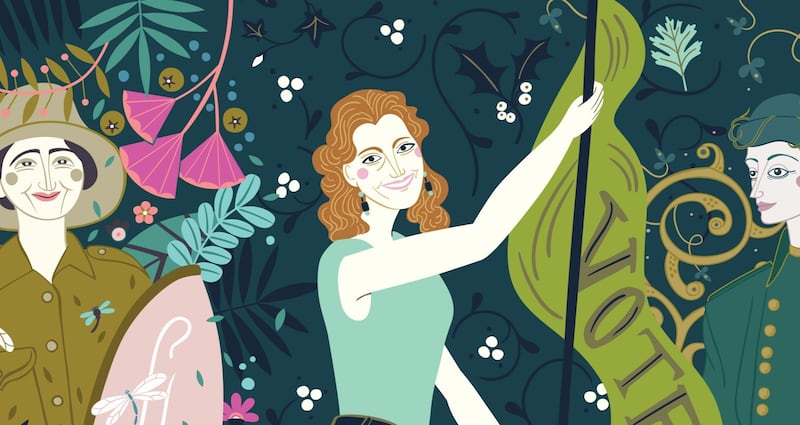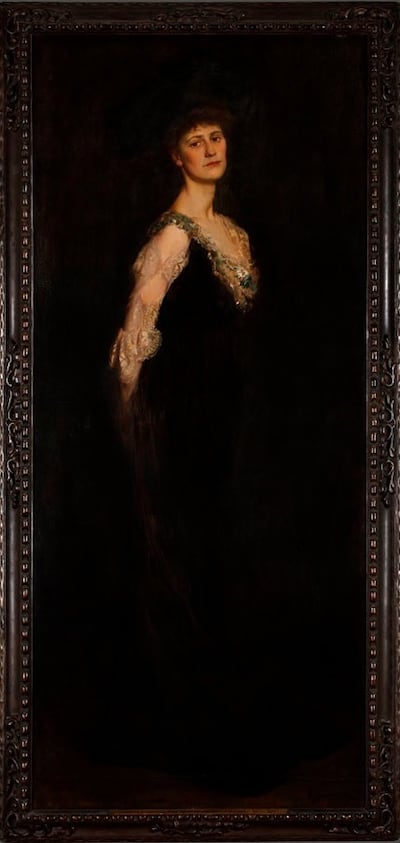This year marks the centenary of the passing of the 1918 Act which provided Irish women with the right to vote for the first time. Legislation passed later the same year meant women gained the right to run in parliamentary elections, and on December 14th, 1918, women voted for the first time in a general election, in which Constance Markievicz was elected as the first woman TD and MP.
The Vótáil 100 programme was established by the Oireachtas to mark this year of significant centenaries. I am honoured to have been elected as chairperson of the Vótáil 100 committee. I have worked with colleagues from all parties, along with our partners in the national cultural institutions, on a programme of events seeking both to celebrate the history of suffrage in Ireland, while also highlighting the need to achieve greater representation for women in politics today.
Our programme began in February with a symposium on women's suffrage, run with the Royal Irish Academy. On International Women's Day, we organised the unveiling of a wonderful portrait of all 53 current women members of the Oireachtas by Noel Murphy, entitled A Woman's Place, also the subject of a documentary recently screened on RTÉ One.

For Seachtain na Gaeilge, the Oireachtas hosted a lecture in Irish by Máire Geoghegan-Quinn, who was only the second woman appointed a cabinet minister in Ireland, 60 years after Markievicz was made minister for labour in 1919.

In April, the Seanad hosted Díospóireacht na nÓg, with 16 transition year students from across the island speaking on the topic of women’s suffrage. In July, our Vótáil 100 committee travelled to London with the Ceann Comhairle to present a copy of a portrait of Markievicz, held by the Hugh Lane Gallery, to the House of Commons in the presence of the speaker John Bercow.
The Oireachtas has also hosted a successful exhibition on women's suffrage in the Seanad ante-room, in partnership with the National Museum of Ireland, the National Library of Ireland, and the Sheehy-Skeffington family. The highlights exhibited include the original IWFL (Irish Women's Franchise League) banner, handmade by the Dun Emer guild in distinctive green and orange – the colours of the Irish suffrage campaign.
In devising our programme, we have been indebted to historians such as Sinéad McCoole, Mary McAuliffe, Rosemary Cullen, Louise Ryan, Margaret Ward, and Sonja Tiernan, whose work has been invaluable in adding to our knowledge about the suffrage movement and about those women too often missing from history books.
Century of campaigning
Indeed, it is often forgotten that the achievement of votes for women in 1918 marked the culmination of almost a century of campaigning for reform. Nor did the campaign end there, because the 1918 Act only partially enfranchised women, limiting voting rights to those women over 30 who owned property, while extending the vote to almost all men over 21. Fully equal suffrage was not achieved in Ireland until 1922, when universal voting rights for all women and men over 21 were introduced in the Irish Free State Constitution; equal suffrage came some years later for women in Britain.
In the December 1918 general election, two women stood as candidates on the island of Ireland: Winifred Carney in Belfast and Constance Markievicz in Dublin; only Markievicz was elected, but did not take up her seat at Westminster. More women TDs were then elected in the subsequent 1921 and 1923 elections; women such as Kathleen Clarke, Ada English, Mary MacSwiney and Kathleen Lynn. The work of academic Claire McGing has shown clearly the challenges faced by these early women TDs in a predominantly male environment. Indeed, the next 50 years would see a marked stagnation, and even reversal, on women's rights.

Remarkably, no general election between the 1930s and the early 1970s returned more than five female TDs at a time. In fact, there were more women TDs in 1923 (five) than in 1973 (four). As Martina Fitzgerald's new book Madam Politician reminds us, even today only 19 women have ever been appointed as cabinet ministers in Ireland.
Having spent the last year commemorating the history of women’s suffrage in Ireland, we can now look forward to the future and see what more needs to be done to achieve greater gender equality in politics.
The very low representation of women as Oireachtas members was something that struck me forcefully when I was first elected in 2007. In December 2008, to celebrate the 90th anniversary of the December 1918 election, I initiated an ‘Oireachtas Women’ day in the Dáil chamber, inviting all women still living who had ever been elected as TDs or senators to be present in the chamber. A very striking photograph was taken, sparking a debate about how to improve the representation of women in the Oireachtas.

On November 21st this year, all living women who have ever been members of the Oireachtas were invited to gather once again in the Dáil chamber for a similar photo. Happily, the numbers involved were much larger this time. In the last general election in 2016, we saw a record number of women – 35 out of 158 TDs – elected to the Dáil, thanks to the new gender quotas legislation, the Electoral (Amendment) (Political Funding) Act 2012. This Act requires political parties to select at least 30 per cent of their candidates of each gender or be subject to a stringent funding cut. Its introduction arose from the 2009 Oireachtas Justice Committee report on Women's Participation in Politics, which I authored, which recommended a range of measures to improve the representation of women in parliament.
Importance of quotas
During the committee hearings held in preparation for the report, we heard from expert witnesses, including Prof Yvonne Galligan, about the importance of quotas. She and others convinced us of the need to introduce positive action measures to address the existing obstacles or barriers to greater women's representation in politics. We named these the 'Five Cs': childcare, cash, confidence, culture and candidate selection procedures.
We made a series of recommendations aimed at addressing problems of childcare, difficulties with raising cash, the introduction of mentoring programmes and leadership training programmes to address women’s lack of confidence. Our most controversial recommendation was the introduction of quotas; it took some years to achieve implementation of this in the 2012 Act.
Thus, in 2016, we saw the impact of this new legislation, with an increase from 14 per cent to 22 per cent in the proportion of women in the Dáil. However, this figure is still far too low. We are continuing to work to increase the numbers of women entering politics, through initiatives like the very welcome establishment of the Oireachtas Women’s Caucus last year, chaired by Green Party TD Catherine Martin, of which I am delighted to be an executive member. Our caucus is seeking the extension of quotas to local elections, as we know that this will help to bring about a real change in the Dáil and in Cabinet.
The undeniably positive impact of quotas in the last election has demonstrated how necessary they were to bring about progress for women. It has also contributed to discussion in other sectors about how to achieve greater representation of women at senior level, in both the public and private sector, through initiatives like the “women-only professorships” for academic institutions announced in November.
In this centenary year, the repeal of the Eighth Amendment by a large majority of the voting public in May 2018 marked a particularly poignant moment, reminding us how far Ireland has come on progressing women's rights. Gender Pay Gap reporting, as required in a private members' Bill that I have introduced for the Labour Party, and which has already passed all stages in the Seanad, is likely to become law next year. Its introduction will highlight the continuing challenges facing women in the workforce.
In this significant centenary year, we can take stock of the vast improvements made for women in Ireland over the past 100 years, while also considering how much is still left to do. We must remember that the legacy of the suffrage movement extends far beyond achievement of the vote and of parliamentary representation. The suffragettes and suffragists knew the vote was not an end in itself but a means to an end.
I am confident that women like Hanna Sheehy-Skeffington, who proudly called themselves feminist, would be working alongside us in today’s battles around gender equality issues. It is important that we take the opportunity this year to remember these women and so many like them by honouring their legacy, and holding true to the feminist ideals for which they fought so hard for so long.
Ivana Bacik is Labour Party Senator for Dublin University, Reid Professor of Criminal Law at Trinity College Dublin, a barrister and chairperson of the Oireachtas Vótáil 100 Committee to mark the centenary of women’s suffrage in Ireland.
















